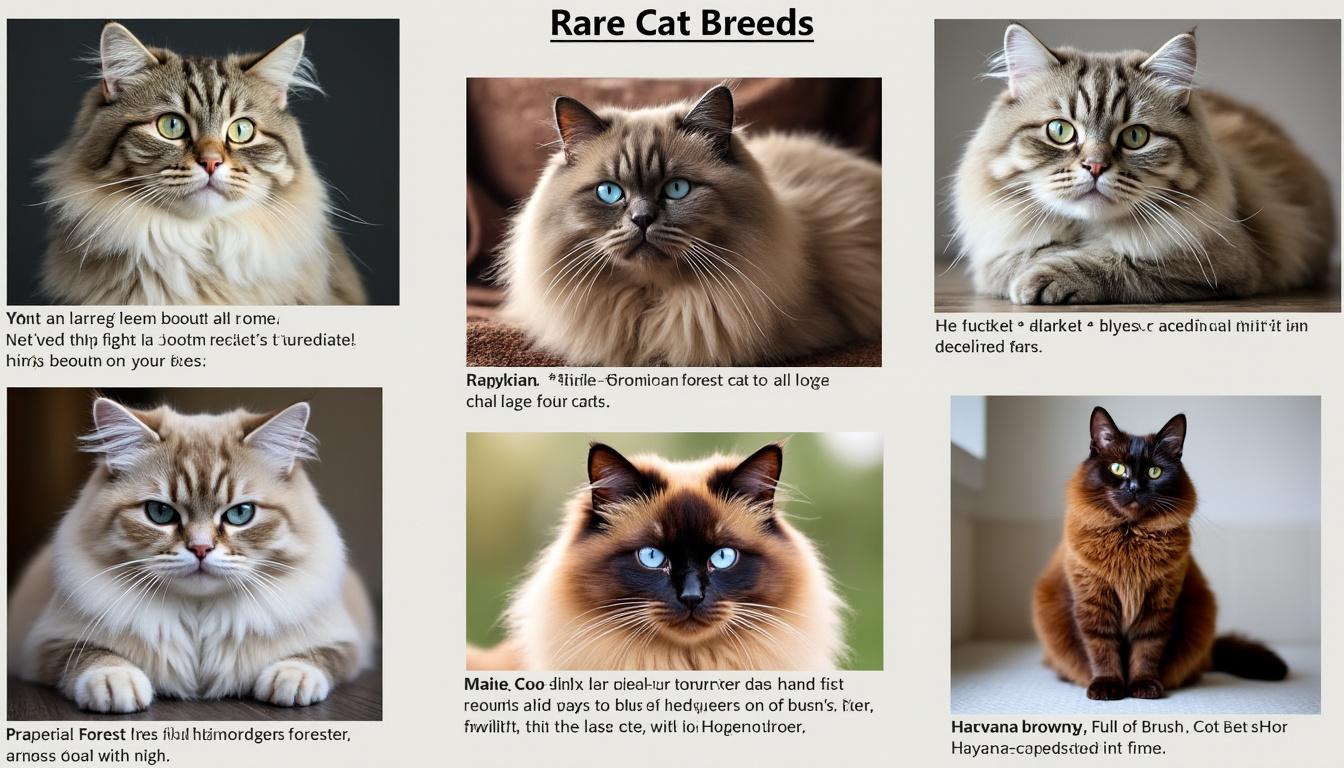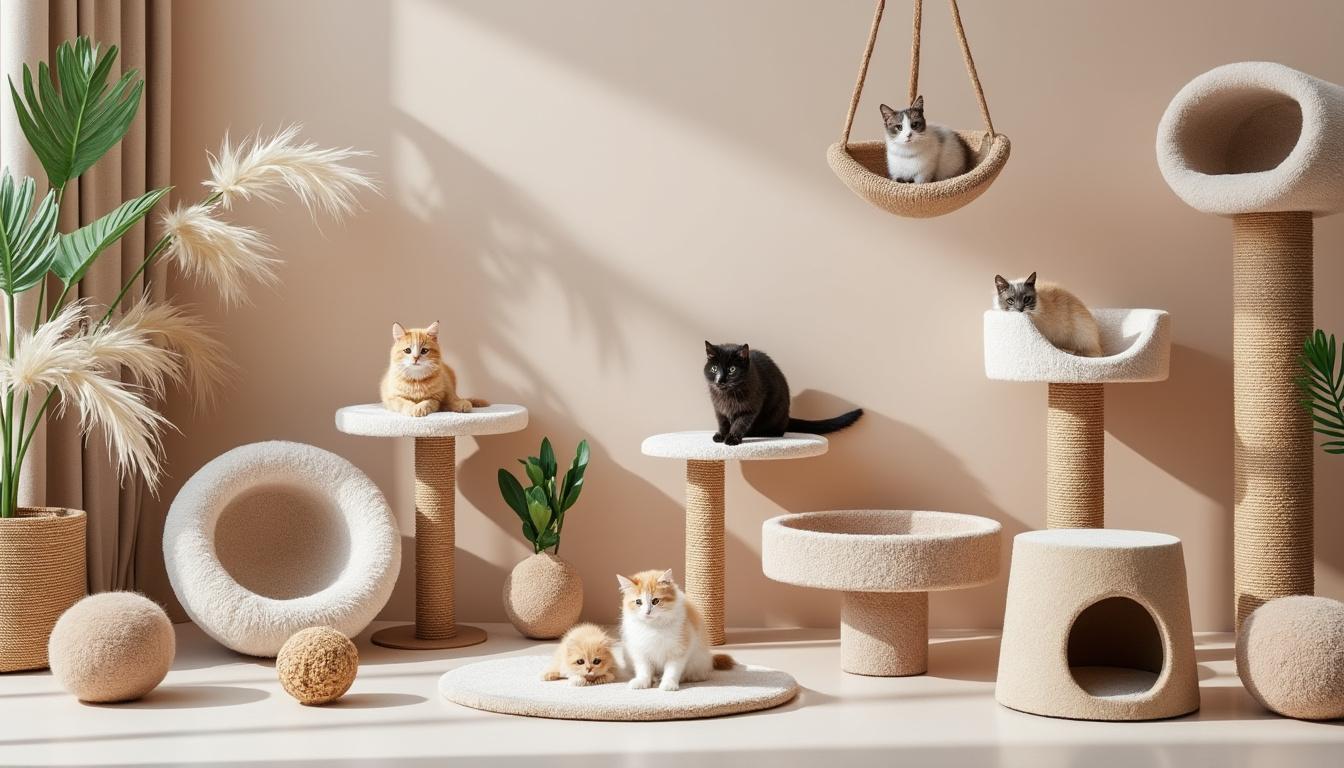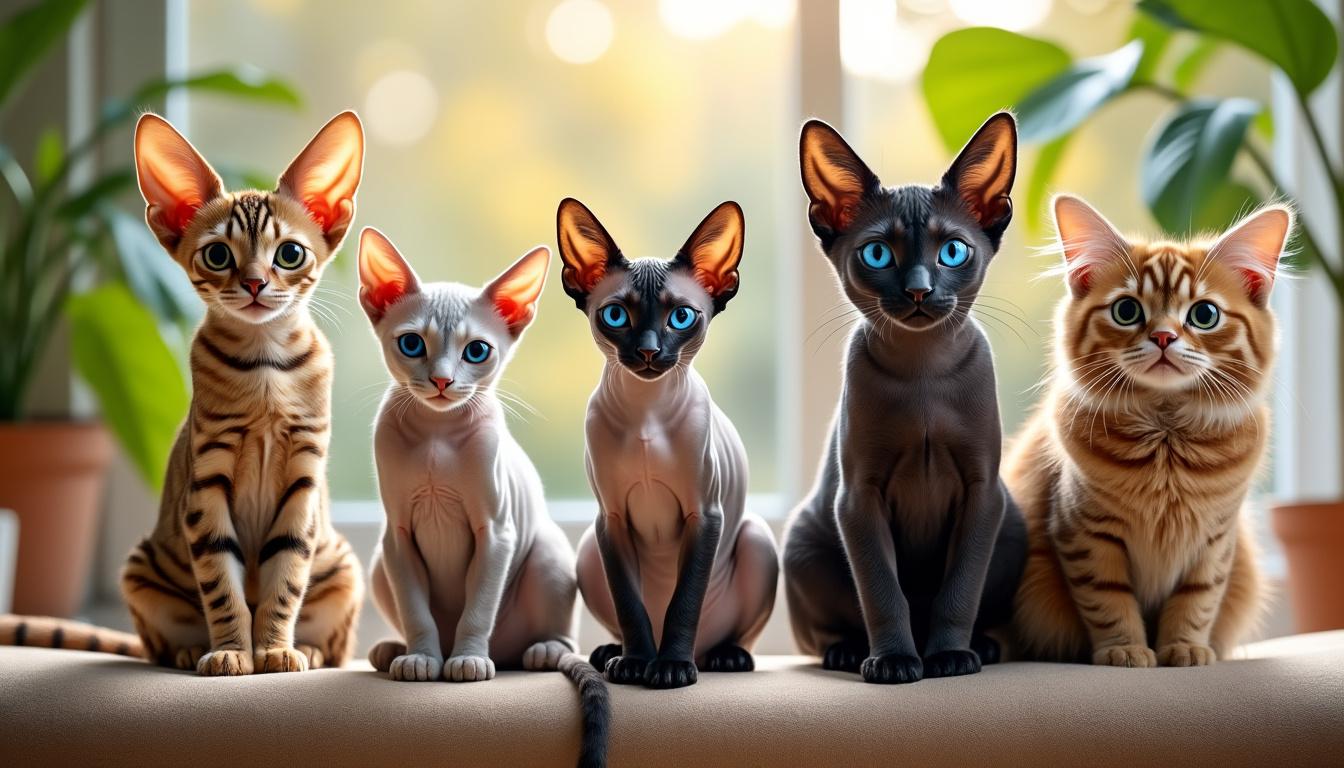Cats have been our companions for thousands of years, offering their charm and grace to our lives. In a world where mainstream breeds like the Persian or Maine Coon often dominate the spotlight, there lies a hidden realm filled with rare and exotic cat breeds. These unique felines, with their striking appearances and intriguing backgrounds, tell tales that are as captivating as their physical attributes. Whether you’re a devoted cat enthusiast or someone simply intrigued by the diversity of our feline friends, understanding these rare breeds can open your eyes to a whole new aspect of the pet world.
Among these rare breeds, many are products of distinct geographic regions, historical occurrences, or deliberate breeding programs. Rarity in cat breeds is often associated with limited population numbers, strict breeding regulations, or unique genetic traits. Exploring the world of rare cats isn’t just about their scarcity; it’s about discovering the special characteristics, personalities, and the love they bring into our lives. As we uncover the stories behind these rare breeds, you’ll find a range of personalities waiting to be adored and cherished.
Let’s embark on this enlightening journey through the world of rare cat breeds. From the fascinating Lykoi to the stunning Khao Manee, there’s a uniqueness in every feline that deserves to be celebrated.
In short:
- Discover the unique traits of rare cat breeds.
- Learn about their history and origins.
- Understand their care needs and personalities.
- Find out why adopting a rare breed may be the right choice for you.
- Explore how to connect with reputable breeders or rescues.
Exploring the Appeal of Rare Cat Breeds
Rare cat breeds captivate not just because of their rarity, but due to their distinctive qualities and personalities. These cats often undergo selective breeding, which can lead to specific traits that set them apart from the more common breeds. For many cat lovers, these breeds represent not just companionship, but a commitment to preserving diversity within the feline species.
One of the fundamental reasons why cat enthusiasts are drawn to rare breeds is the unique aesthetic appeal. Many of these breeds possess exceptional physical traits that can easily differentiate them from your standard domestic cats. For instance, the Lykoi, often referred to as the “werewolf cat,” has a distinctive patchy fur coat that gives off a mysterious vibe. On the other hand, the Khao Manee, with its strikingly pure white coat and striking blue or green eyes, exudes elegance and beauty, encapsulating everything that cat lovers adore.
Understanding Rarity in Cat Breeds
So, what qualifies a cat breed as rare? The following criteria help in identifying rare breeds:
- Limited Population: A breed can be classified as rare if it has a small number of registered individuals globally.
- Specific Recognition: Many rare breeds are recognized by a few select cat registries, like The International Cat Association (TICA) or The Cat Fanciers’ Association (CFA).
- Geographic Rarity: Some breeds originate from specific regions and have not been widely adopted elsewhere, adding to their uniqueness.
Each of these qualifying factors not only highlights the limitations in breed availability but also underscores the effort required on the part of breeders and lovers alike to maintain these beautiful species. Fewer available individuals may heighten demand, making adoption and finding these cats more of an adventure.

Unveiling the Unique Backgrounds of Rare Cat Breeds
Diving deeper into the origins of these breeds reveals fascinating histories that have shaped their existence. Each rare breed has its own story that reflects cultural significance, natural adaptations, and the environments from which they hail.
The Lykoi: The Werewolf Cat
Originating in the United States, the Lykoi breed emerged from a natural mutation in domestic shorthaired cats. Their unique wolf-like appearance, characterized by sparse fur and large ears, has captured the attention of cat enthusiasts since its discovery in 2010. These cats are playful and affectionate, making them wonderful companions. Their name, derived from Greek, literally translates to “wolf,” paying homage to their distinct looks.
The Khao Manee: A Royal Breed
Hailing from Thailand, the Khao Manee or the “Diamond Eye Cat” has been cherished for centuries, particularly among royalty. Revered for their striking white fur and mesmerizing blue or heterochromatic eyes, these cats symbolize prosperity and good fortune. Their friendly nature makes them wonderful family pets, and their history adds another layer of allure.
The Serengeti: Wild Looks, Gentle Hearts
The Serengeti breed is a blend of Bengal and Oriental Shorthair cats, developed in the United States to emulate a serval’s appearance while maintaining a friendly disposition. With their long legs and spotted coats, they look like miniature wildcats and are known for their playful demeanor. They thrive in dynamic environments where they can interact and explore.
The Turkish Van: A Unique Combination
From the harsh climates of Lake Van in Turkey, the Turkish Van is a breed known for its distinctive color patterns and affinity for water. With their semi-long fur and striking color contrast (often with a white body and colored markings), these cats are quite remarkable. Their love for swimming is a fun quirk that sets them apart from other breeds.
Ultimately, each breed’s distinctive origin story contributes to its characteristics, temperament, and overall appeal. Cat lovers should consider these backgrounds when inviting a rare breed into their homes.
Assessing Personality and Care Needs of Rare Cat Breeds
Understanding the personality traits and care needs of these rare cat breeds is essential for determining if they fit into your lifestyle. Pioneering a relationship with a rare feline goes beyond aesthetics; it’s about creating a bond and ensuring mutual happiness.
Personality Traits
Many rare cat breeds exhibit distinct personality traits that make them fascinating companions. Some are outgoing and social, while others may lean toward a more reserved nature. Here’s a quick look at the personality traits of a few rare breeds:
- Lykoi: Playful and affectionate, they exhibit dog-like loyalty.
- Khao Manee: Friendly and social, they thrive on interaction.
- Serengeti: Energetic and curious, always ready for exploration and climbing.
- Turkish Van: Intelligent and active, they love engaging play.
Care Requirements
Caring for rare breeds involves specialized needs, from grooming to environmental considerations:
- Grooming: Some breeds require regular grooming to keep coats in optimal condition, while others may have low-maintenance fur. For example, the Khao Manee only needs minimal grooming due to its short hair.
- Monitoring Health: Due to their rarity, some breeds, like the Peterbald, may face unique health challenges. Regular vet visits become essential.
- Environment: Energetic breeds like the Serengeti need vertical space for entertainment, while more laid-back breeds will appreciate a cozy nook.
When considering a rare breed, it’s crucial to weigh these personality traits and care requirements against your lifestyle to find the best match.

Finding and Connecting with Rare Cat Breeds
Once you’ve decided that a rare breed is the right fit for you, there are effective ways to find these elusive felines. Whether through breeders or rescue organizations, making informed choices will ensure that you’re welcoming a happy and healthy companion into your life.
Researching Breeders
Finding a reputable breeder is paramount in your search for a rare cat breed. You want to ensure you’re dealing with organizations that prioritize the health and wellbeing of their animals:
- Look for breeders registered with trusted bodies like TICA or CFA, which uphold high breeding standards.
- Attend cat shows and expos to meet breeders directly and learn about their methods.
- Utilize online directories and forums to find recommendations from other cat enthusiasts.
Exploring Rescue Options
For those looking to adopt, various rescue organizations specialize in rare breeds. Some may even focus specifically on certain species, providing a chance to give a cat in need a forever home:
- Check websites like Petfinder or Adoptapet to uncover potential adoptions.
- Follow social media pages dedicated to rare breeds for updates on available cats.
Connecting with the right resources can be the key to finding your new feline friend.
Considerations Before Adding a Rare Cat Breed to Your Family
Bringing a rare cat breed into your home involves significant responsibilities and considerations. Understanding these factors ensures that both you and your new pet will thrive together:
Cost
Rare breeds typically command higher adoption fees due to their scarcity and the costs associated with proper breeding practices. Be prepared for initial costs as well as ongoing care expenses, such as frequent vet check-ups and specialized foods.
Health & Genetics
Some rare breeds may be genetically predisposed to particular health issues. Being informed about potential concerns and being ready to actively manage your pet’s health is paramount.
Lifestyle Fit
Consider your lifestyle when adopting. Some rare breeds may require more attention, affection, or interaction than you can provide. Assess energy levels, social needs, and grooming requirements to find a good fit.
Source and Adoption Process
Finding a trustworthy breeder or rescue organization is essential. Research and verify that your source follows ethical practices in breeding and ensures the wellbeing of animals during the adoption process.
Important Note: Always prioritize adopting over buying where possible, as it helps provide homes for cats in need and supports reputable rescue efforts focused on preserving rare breeds.
What is the rarest cat breed in the world?
The rarest cat breeds include the Lykoi and the Ojos Azules, known for their distinct appearances and limited populations.
How can I find a rare cat breed to adopt?
You can find rare cat breeds through reputable breeders, cat shows, and rescue organizations. Websites like Petfinder can also help with adoption.
What should I know about the care needs of rare cat breeds?
Care needs vary by breed, but common considerations include grooming, health monitoring, and space for play. It’s crucial to match the breed’s requirements with your lifestyle.
Are rare cat breeds more prone to health issues?
Some rare breeds may have genetic predispositions to specific health conditions, making regular vet check-ups essential for early detection and management.
Can rare cat breeds be social and affectionate?
Yes, many rare breeds are known for their affectionate and social behaviors, making them wonderful companions for families and individuals alike.

